ceiling and sky murals
Painted ceiling murals and sky murals provide an excellent way to add a suggestion of height to a room and provide a sense of the extraordinary. We undertake work for architects, interior designers, corporate and private clients.
ceiling mural images
sky murals in use
The painted illusion of a sky ceiling works due to both subliminal thematic suggestion and the virtue of blue acting as receding colour.
Skillful development of the painted sky in the hands of a muralist enriches and deepens the sense of space we feel upon entering a room. It is the role of the mural artist to create the impression of light, space and movement, form a focal point and, as often as not, a conversation point. This is a traditional theme, however it can be usefully incorporated in the modern interior as well.
ceiling murals in use
Trompe l'oeil illusionistic painting of ceiling architecture and mouldings can be used to support both sky murals and ceiling murals, although for reasons of perspectival integrity this is best suited to an already elevated ceiling unless the illusory elements being depicted are of shallow depth. Already high ceilings can accommodate more elaborate illusionistic painted effects, either in support of painted sky murals or as ceiling mural designs within themselves. Mural artist are skilled in the use of perspectival renderings and trompe l'oeil effects which both compliment the extant architecture and render the imaginary space in a realistic manner.
sky and ceiling murals history
This is a traditional theme having its zenith in the Baroque and Rococo periods. It was common practice to paint ceilings blue with a smattering of stars in ecclesiastical buildings from the middle ages on. However, the first self conscious use of perspective as an illusionistic devise for ceiling murals is probably that of Mantegna in the Palazzo Ducale in the early Renaissance. This type of treatment reached its apogee several centuries later with the theatricality of the Baroque. The tradition of the artistically painted ceiling continued through the Rococo and Neoclassical periods, and continues today in order to provide the painted illusion of light and space being above us.


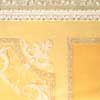 Ceiling mural architecture
Ceiling mural architecture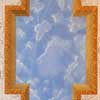 Ceiling mural baroque sky
Ceiling mural baroque sky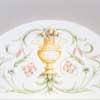 Ceiling mural lunette panel
Ceiling mural lunette panel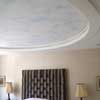 Modern sky ceiling mural
Modern sky ceiling mural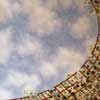 Sky mural clouds trellis
Sky mural clouds trellis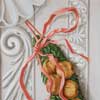 Ceiling mural on canvas
Ceiling mural on canvas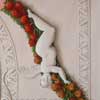 Ceiling mural cherubs
Ceiling mural cherubs Sky ceiling mural clouds
Sky ceiling mural clouds